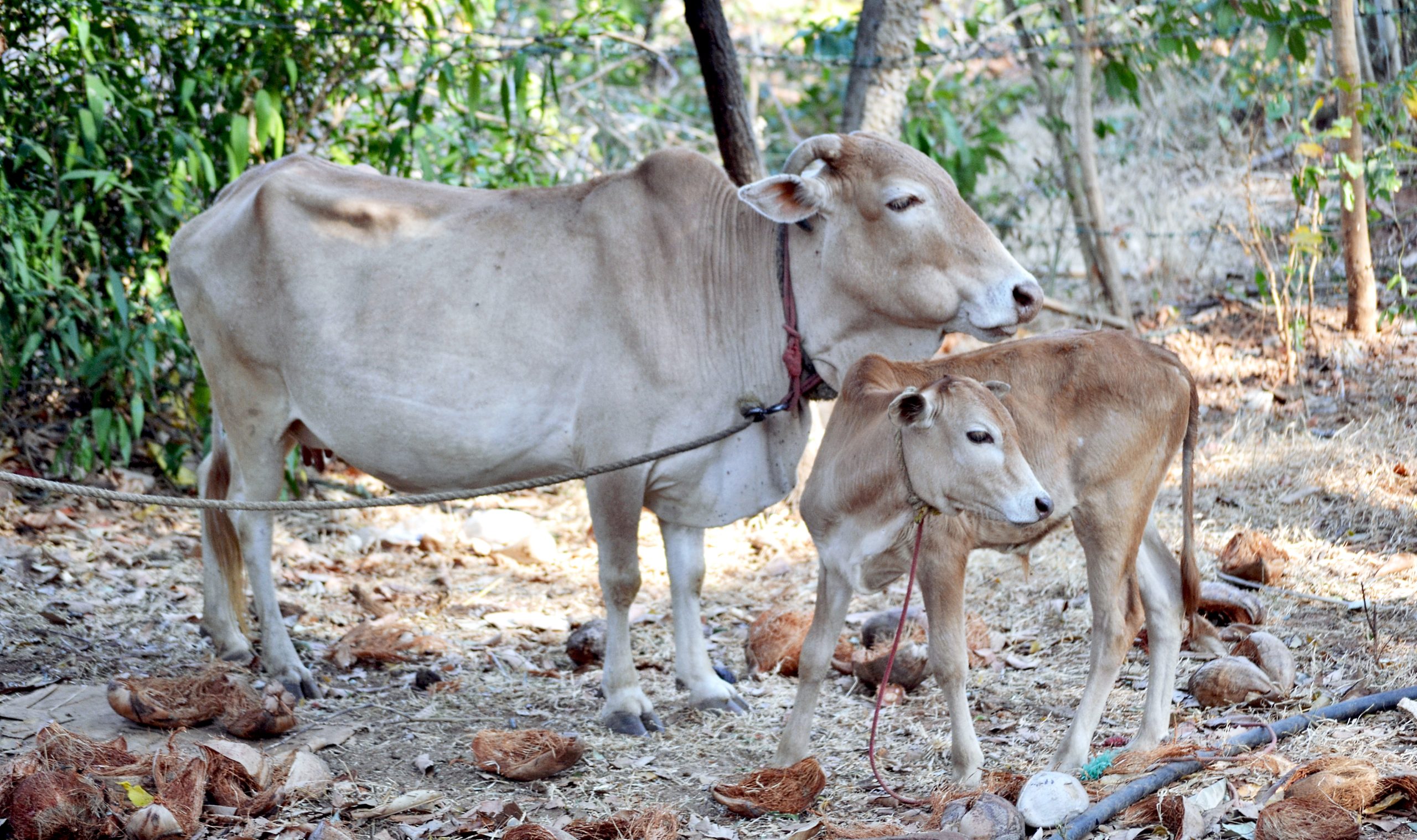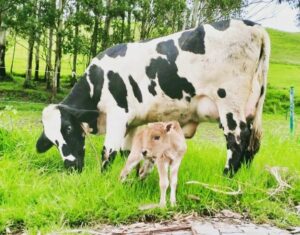Kerala formalised an increase in fodder prices, and quietly buried an incentive scheme for milk production that it announced in July.

Cattle feed prices are up, driving dairy farmers in Kerala to despair. (Creative Commons)
Kerala’s micro-dairy units desperately need some milk of human kindness — from the state government.
Not only has the state machinery formalised an increase in fodder prices, but it has also quietly buried an incentive scheme for milk production that it announced in July.
That apart, if a voice recording of a minister is to be believed, it thinks small milk producers can always grow grass and claim fodder incentives if the dairy business was not making ends meet.
What is ironical is that the milk sold by Milma — the Kerala Co-operative Milk Marketing Federation, promoted by the government to protect small dairy units — will cost ₹6 more from next month.
“Instead of addressing fundamental issues like cattle feed prices, it is raising its own selling price,” observed Aby Ipe of the Kerala Karshaka Congress (KKC), a farmer’s union affiliated to the Congress party.
“This will encourage private players to source cheaper milk from outside and make profits in Kerala,” he told South First.
Added Madhu Nair, a distraught dairy farmer from Kottayam: “The government has let us down again and again.”
Dairy farmers in Kerala are upset by a government order that raised the price of a 50-kg sack of feed for calves by ₹100 (from ₹1,025 to ₹1,125), and that for cattle by ₹150 (from ₹1,350 to ₹1,500).
The order, published on 28 October, also explained that the step was taken after Kerala Feeds Ltd., a state-owned company that produces compounded cattle feed and feed supplements for cattle, requested that its selling price be increased as raw materials had become costlier.
The order also referred to cost issues faced by Milma.
“The government has examined the matter in detail and to solve the crisis currently faced by Kerala Feeds Ltd and Milma due to the increase in the price of raw materials required for fodder production, it is ordered to increase the fodder distributed under the SLPB (Special Live Stock Breeding Programme) to ₹1,500 per bag (50 kg) with effect from 01/11/2022.”
The price increase was formally announced despite a decision by the state’s Dairy Development Department in April to control the prices of cattle feed.
But the price hike has actually been in effect for several months now, despite the April decision, and even before the formal announcement earlier this month.
In a report dated 3 April, The Hindu newspaper said the price of a sack of quality feed had risen ₹200 to ₹1,500. It also quoted Thilakan, a dairy farmer from Kannur, as saying that Kerala Feeds had hiked the price of wheat bran “some six months back”.
“The selling price of milk is the same, but the cost of cattle feed is rising all the time,” Kottayam’s Nair told South First. “This puts us in a terrible situation.”
To complicate matters, said Aziz, a Kottayam dairy unit owner, Milma finds it cheaper to procure milk from neighbouring Tamil Nadu.
This price varies, but is generally never more than what is paid to Kerala dairy owners.
For instance, according to the Tamil Nadu Milk Dealers Employees Welfare Association president
SA Ponnusamy, dairies in his state are currently paid about ₹31-32 per litre. This is about ₹6-9 less than that paid to their Kerala counterparts.
Interestingly, the government has, in writing, alluded to the problems that arise for the farmer from higher feed prices.
In the Dairy Development Department’s Annual Plan 2022-2023 report, it admits that the cost of feeding cattle can compel farmers to “adopt under-feeding practices which lead to malnutrition”.
Dairy farmers are also upset over what they allege is a false promise by the state government regarding an incentive scheme for milk producers.
In a statement in the state Assembly on 12 July, Dairy Development Minister Chinchurani said Kerala’s dairy farmers would be paid an additional ₹4 per litre of milk till March 2023 as it was not possible to increase the price of milk in the state at present.
“The subsidy that was given to the farmers used to be for three or four months in a year. From this July to March, we will provide ₹4 subsidy to all dairy farmers in the state. We will be giving it as an incentive,” her statement read.
“We had allotted ₹13 crore [towards this scheme] in the year 2019-20, but we have now increased it to ₹28.57 crore,” Chinchurani said amidst resounding applause from members of the ruling party.
Originally, local self-governments disbursed the incentive for three months every year. Following the recommendations by the 14th Five-Year Plan, the government reduced the incentive to ₹3, but restored the old amount following protests.
Dairy farmers say the incentive was in addition to about ₹37-40 they earn from cooperative societies for every litre of milk supplied; minor changes in the rates are calculated after measuring the presence of solid non-fat and fat content in the milk.
In a Facebook post on 22 July, Chinchurani said the incentive amounts would be credited to the dairy farmers’ bank accounts directly from August.
According to Business Standard newspaper, the Wayanad district administration, in a statement on 11 August, also said payments had begun from July.
Small dairy owners who South First spoke to claimed they have stopped receiving anything since August.
“Farmers have only received incentive for July, and nothing since then,” said KKC’s Aby Ipe.
South First is also in possession of a voice recording of a conversation that a man, purported to be a dairy farmer, has with a woman, who sounds like the minister Chinchurani.
In the recording, the man is heard asking, “You were saying the price of dairy feeds will not be increased and now it has been increased?” to which woman responds saying, “Yes, if not the company will have to be closed down.”
Following this, the man’s voice is heard asking: “How will people like us will live?” To this, the woman responds by directing him to start growing grasses, an activity for which he would receive subsidies.
Incidentally, the minister has in the past publicly said milk cooperatives would be encouraged to take up grass cultivation on land available in their respective localities.
When South First asked Chinchurani about the rise in cattle feed prices and denial of incentives, she said she was short of time, and asked this reporter to call later.
However, further calls went unanswered.
How far the “grass scheme” is feasible remains a question. Kottayam’s Aziz, who owns 12 cows, said urbanisation was a major problem; it ate into fields meant for grazing.
Plus, he said, there has been no effort from the government to educate dairy farmers in this activity.
A senior official of the Dairy Development Department in Kottayam admitted to South First that the feed price hike would hurt dairy farmers.
“There has been a hike of ₹250 per sack in the last six months. This will be an extra burden on the small-scale dairy farmers in the state,” said the officer on condition of anonymity.
The official also admitted that growing grass was not enough for increasing milk yield; for that, cattle feed was needed.

A Vechoor cow and its calf developed through IVF by the Kerala Livestock Development Board. (jchinchurani/Instagram)
Cattle feed comes in two forms: Roughage and concentrates. While the first mainly comprises pasture grass, concentrates are often the residues of grains that are high in energy with vitamins and minerals.
Kerala is rich in roughage but needs to import concentrates, which increases the cost of manufacture of cattle feed.
To compound problems, dairy owners in the state cannot access cheap molasses — a source of concentrates — from neighbouring Maharashtra, a major sugarcane grower.
The reason: It is difficult bring molasses into Kerala, as it is an ingredient for making arrack for the state’s illegal hooch units.
All in all, the official said, it was the small dairy units of the state that were suffering the most from rising cattle feed prices.
“What was the purpose of setting up Milma in the first place then?” he asked, underscoring the irony playing out in Kerala’s milk sector.

Apr 26, 2024

Apr 26, 2024

Apr 26, 2024

Apr 26, 2024

Apr 26, 2024

Apr 26, 2024